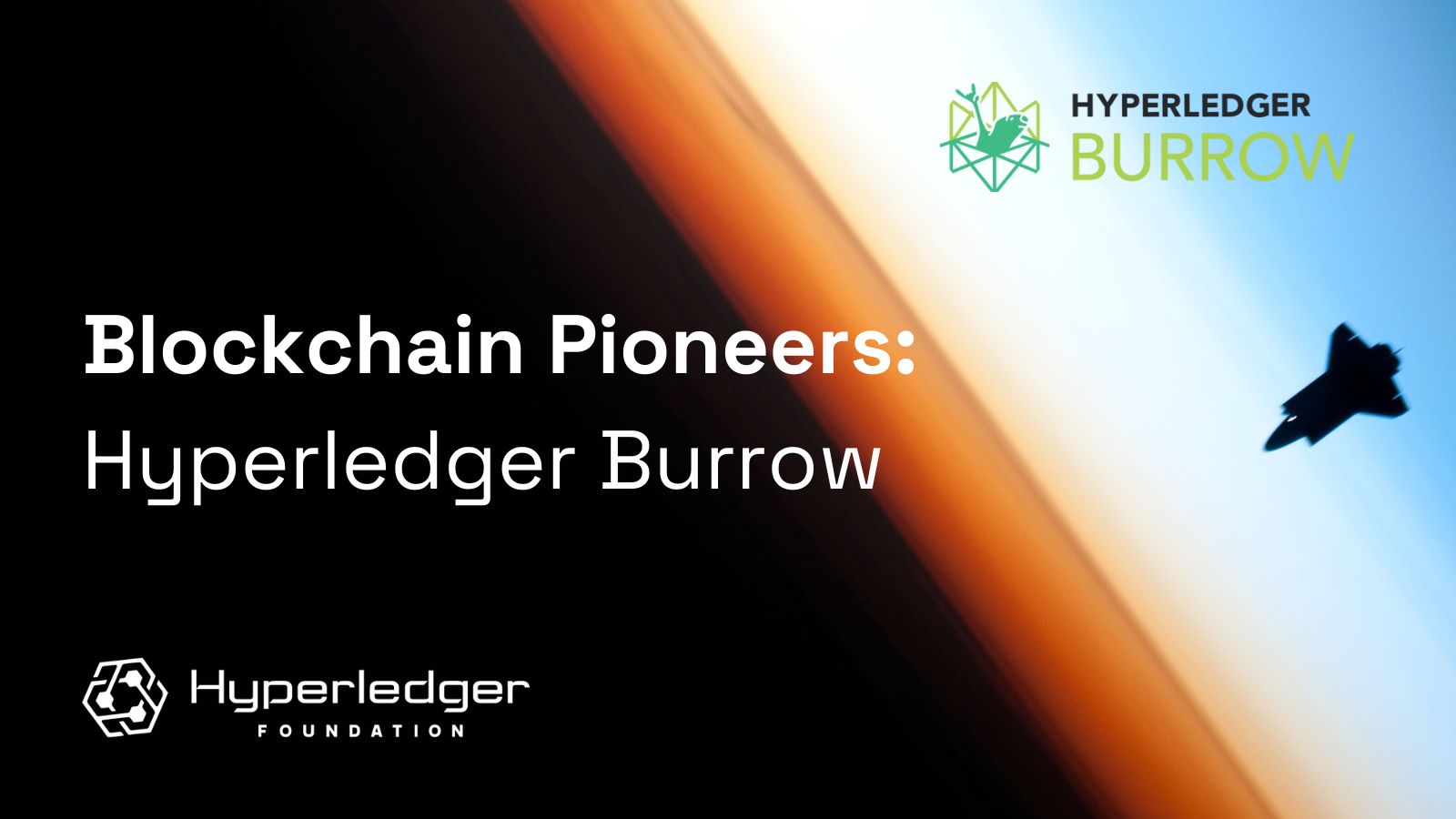Blockchain Pioneers: Hyperledger Burrow

As we laid out in our Helping a Community Grow by Pruning Inactive Projects post, there is an important life cycle to well governed open source projects. Since our launch in 2015, Hyperledger Foundation has hosted a number of now retired projects that helped drive innovation and advanced the development of enterprise-grade blockchain technologies. This series will look back at the impact of these pioneering projects.
Hyperledger Burrow, an EVM smart contract machine and Byzantine Fault Tolerant permissioned ledger, is next up in the series.
History
Hyperledger Burrow was a unique project under the Hyperledger community, offering a framework for executing smart contracts in permissioned blockchains. Despite its innovative features, it was sunsetted in May 2022. This post explores the innovative aspects of Hyperledger Burrow and some of the reasons for its lack of adoption.
Hyperledger Burrow brought several innovative features to the blockchain space. Firstly, it was built around a Byzantine Fault Tolerant consensus algorithm, which is crucial for maintaining reliability in a distributed system where components may fail. Secondly, it was designed to facilitate cross-industry applications for smart contracts. This was a significant step towards achieving the vision of a universal smart contract platform.
Thirdly, Hyperledger Burrow was built on a permissioned implementation of the Ethereum Virtual Machine, which allowed it to interact with smart contracts on other Ethereum-based networks. This feature enabled higher speeds and throughput than permissionless chains. Lastly, Hyperledger Burrow aimed to provide a “clean and simple” developer experience. This focus on usability made it accessible to a large number of developers.
Challenges and Lack of Adoption
Despite these innovative features, Hyperledger Burrow did not gain the expected level of adoption. There are a couple of factors that contributed to this outcome.
One reason was the lack of active maintainers. Open-source projects rely heavily on their community for development and maintenance. If the community is not active or large enough, the project can stagnate. Shifts in the strategic focus of the contributing organizations behind the project played a role in this case. When they decided to allocate their resources elsewhere, it led to a decrease in the development and promotion of Hyperledger Burrow that affected its adoption.
Another headwind for Hyperledger Burrow was the emergence of better alternatives. The blockchain space is highly competitive, with new projects and technologies constantly emerging. The Hyperledger community hosts a number of other distributed ledger platforms that, because of factors such as better performance, ease of use, or community support, gained greater adoption than Hyperledger Burrow.
Legacy
Hyperledger Burrow demonstrated the importance of the Ethereum ecosystem for enterprise-grade blockchain networks and the interest it received paved the way for other similar projects that followed. Hyperledger Besu, an Ethereum client, joined Hyperledger as a project on August 29, 2019, and Hyperledger Web3j, an Ethereum integration library, joined Hyperledger as a project on February 12, 2024.
Other Hyperledger projects, such as Cacti, FireFly and Bevel, have also added support for the Ethereum ecosystem. For anyone who is interested in the work that Burrow started, check out these other projects and get involved on those projects’ regular calls and discussions on Discord.
The original Hyperledger Burrow code is also still available, although the people who had been involved in the project when it was active are no longer involved and may not be responsive to any questions you have.
Conclusion
While Hyperledger Burrow brought several innovations to the blockchain space, it faced challenges that hindered its adoption. Understanding these challenges can provide valuable insights for future projects in this rapidly evolving field. Despite its end-of-life status, the legacy of Hyperledger Burrow as an innovative project striving for interoperability in smart contract platforms continues to inspire.
We would like to thank all of the people who contributed to Hyperledger Burrow while it was an active project.
- The top five contributors: Silas Davis, Benjamin Bollen, Ethan Buchman, Zach Ramsay, and Greg Hill.
- And the more than 26 other people who made a contribution to the project.
Sign up for Hyperledger Horizon & /dev/weekly newsletters
By signing up, you acknowledge that your information is subject to The Linux Foundation's Privacy Policy